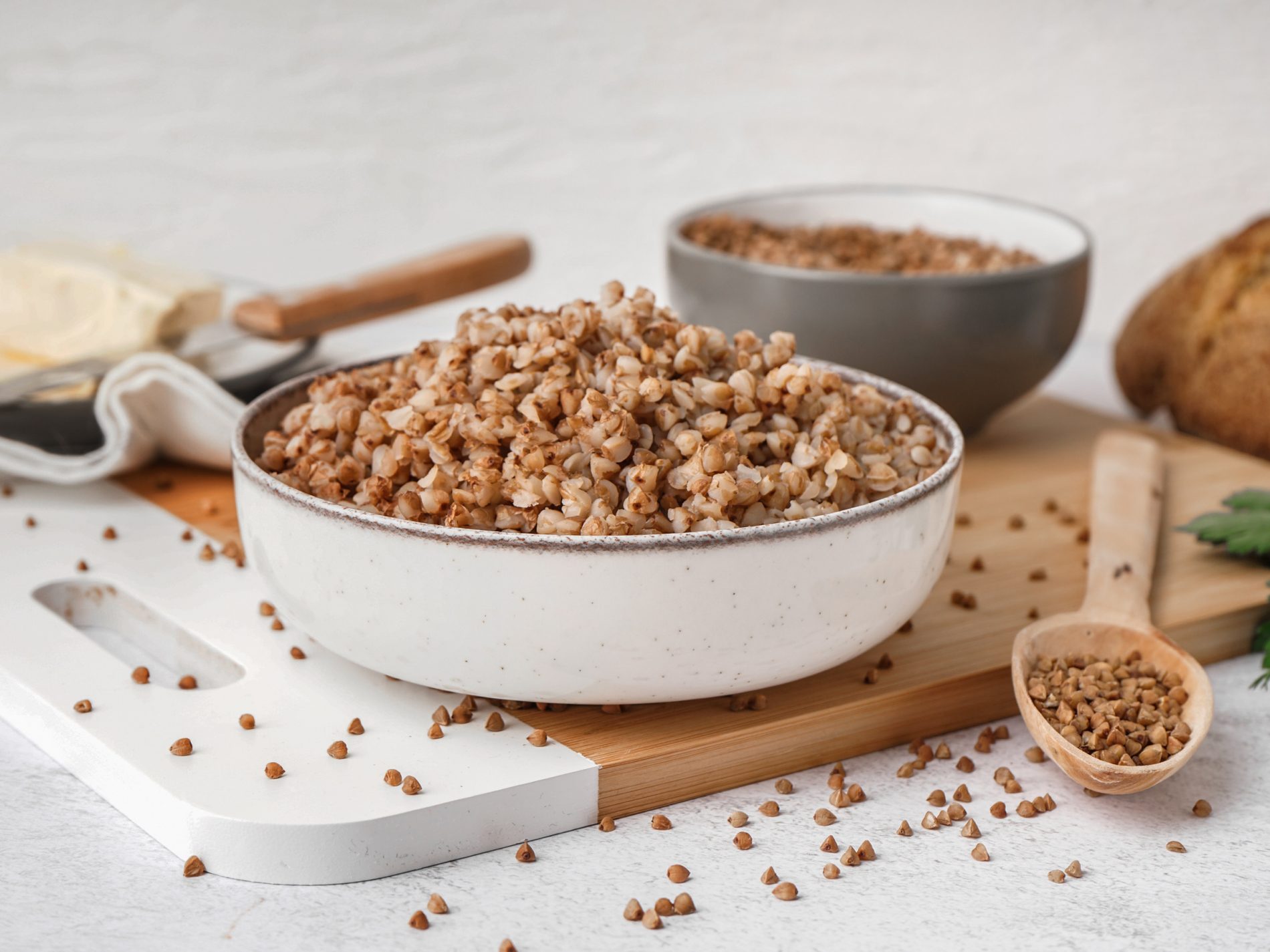Buckwheat is quite a unique grain. It is a staple food for some, while others are entirely oblivious to its existence. It is not related to wheat despite its name; it’s gluten-free.
Buckwheat contains more nutrients and vitamins than oat or rice. On top of this, buckwheat is used as a cover crop. Meaning it keeps other weeds away from the soil it’s been planted in.
It thereby enriches the soil and fights erosion from rains. When in bloom, buckwheat attracts bees. These insects later produce thick, dark and fragrant honey with bitter notes.
The often neglected buckwheat
Apart from the recent spark of interest in ancient grains, buckwheat has often been overlooked in favour of other grains in the USA, Canada and Europe. Yet all the post-Soviet states plus Asia are absolutely fond of this grain.
Russians, in particular, love these fluffy earthy grains. These – together with Christianity – have been brought to them by the Greeks in the 9th century. It is therefore no surprise that Russia is the world’s largest producer of buckwheat, amounting to a staggering 40 % of the market. China and Ukraine are the other leading producers.
Meanwhile, Europeans are only awakening to the benefits of buckwheat.
Buckwheat is a versatile crop
Along with Russia, China, India, Korea and Japan use buckwheat to produce flour. For example, the famous Japanese soba noodles are made of buckwheat flour. In India, buckwheat is cooked during celebrations for various festivals.
Buckwheat can be boiled, sautéed and baked. It can be used interchangeably with rice. The grain can be eaten either on its own or as an ingredient in dishes like meatballs, stuffed peppers or soups.
Let’s try a classic Russian recipe
The easiest yet highly classic recipe comes from Russia with just a few ingredients: buckwheat with porcini mushrooms.
- Wash and dry 200 g / 1 cup of buckwheat. Maybe the buckwheat you use has already been roasted. Otherwise, put a skillet on high heat and fry the grains for a couple of minutes. That will enhance the flavour of the grains, adding nutty notes to the dish.
- In a pan, boil 400 g / 2 cups of water with a pinch of salt.
- Add the roasted buckwheat grains.
- Once the water boils again, reduce the heat and remove the brown foam with a spoon. Cook for 6-8 minutes. Then remove from the heat and cover with the lid for a few more minutes.
- In the meantime, finely cut 1 onion and 200 g / 1 cup of porcini into bite-sized pieces.
- Set a frying pan on medium heat and fry the chopped onion until translucent.
- Then add porcini and cook until the liquid from the mushrooms has evaporated.
- Once the vegetable mix is ready, transfer it to the pan with the buckwheat. Mix well and warm it up to allow the juices to be absorbed by the grains.
It’s essential to keep a close eye on the readiness of the grain. You want to keep it soft and fluffy, just like rice. Mushy or undercooked buckwheat will spoil the taste of the dish.
Scatter some fresh dill over the dish and serve it alone or as a garnish alongside your main.











What do you think?